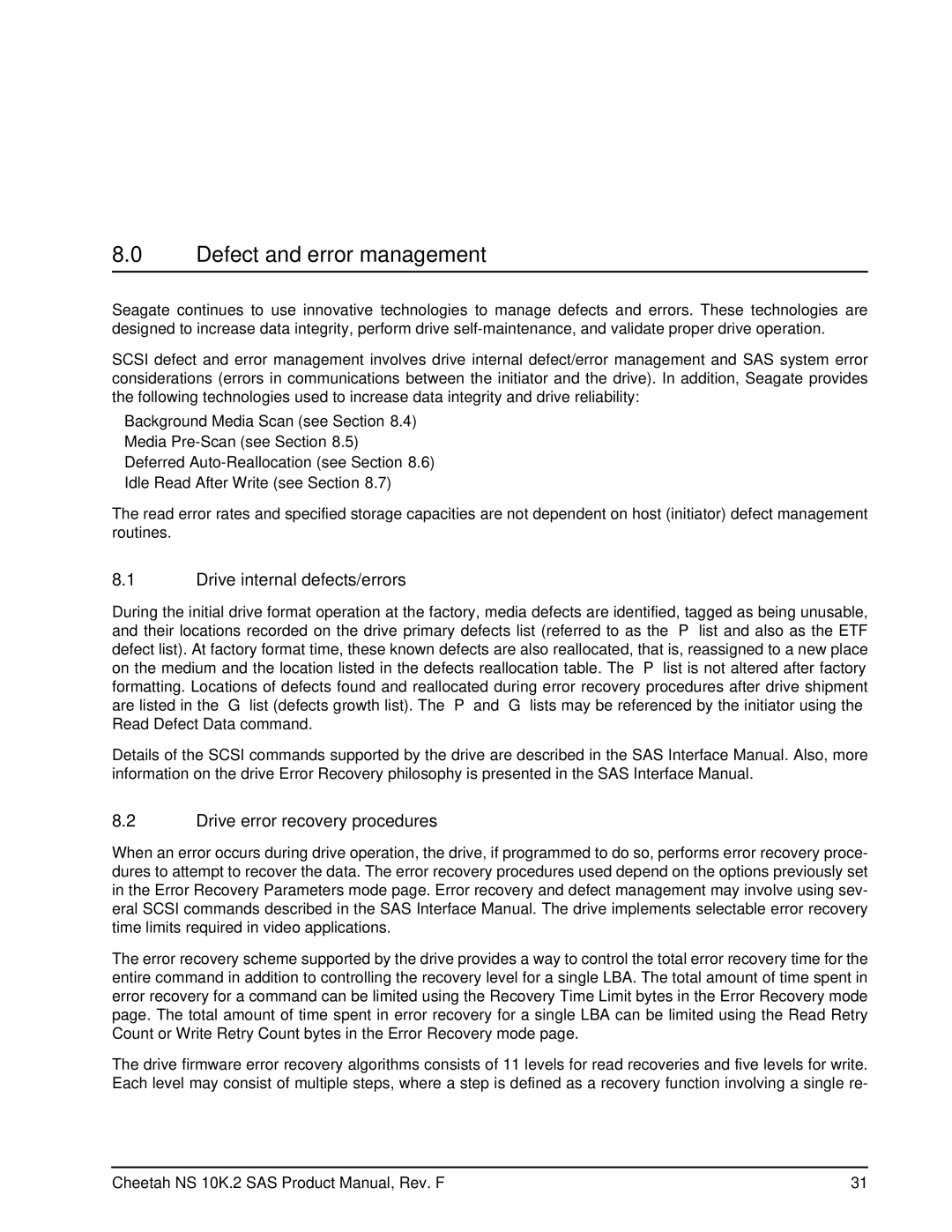
8.0Defect and error management
Seagate continues to use innovative technologies to manage defects and errors. These technologies are designed to increase data integrity, perform drive
SCSI defect and error management involves drive internal defect/error management and SAS system error considerations (errors in communications between the initiator and the drive). In addition, Seagate provides the following technologies used to increase data integrity and drive reliability:
•Background Media Scan (see Section 8.4)
•Media
•Deferred
•Idle Read After Write (see Section 8.7)
The read error rates and specified storage capacities are not dependent on host (initiator) defect management routines.
8.1Drive internal defects/errors
During the initial drive format operation at the factory, media defects are identified, tagged as being unusable, and their locations recorded on the drive primary defects list (referred to as the “P’ list and also as the ETF defect list). At factory format time, these known defects are also reallocated, that is, reassigned to a new place on the medium and the location listed in the defects reallocation table. The “P” list is not altered after factory formatting. Locations of defects found and reallocated during error recovery procedures after drive shipment are listed in the “G” list (defects growth list). The “P” and “G” lists may be referenced by the initiator using the Read Defect Data command.
Details of the SCSI commands supported by the drive are described in the SAS Interface Manual. Also, more information on the drive Error Recovery philosophy is presented in the SAS Interface Manual.
8.2Drive error recovery procedures
When an error occurs during drive operation, the drive, if programmed to do so, performs error recovery proce- dures to attempt to recover the data. The error recovery procedures used depend on the options previously set in the Error Recovery Parameters mode page. Error recovery and defect management may involve using sev- eral SCSI commands described in the SAS Interface Manual. The drive implements selectable error recovery time limits required in video applications.
The error recovery scheme supported by the drive provides a way to control the total error recovery time for the entire command in addition to controlling the recovery level for a single LBA. The total amount of time spent in error recovery for a command can be limited using the Recovery Time Limit bytes in the Error Recovery mode page. The total amount of time spent in error recovery for a single LBA can be limited using the Read Retry Count or Write Retry Count bytes in the Error Recovery mode page.
The drive firmware error recovery algorithms consists of 11 levels for read recoveries and five levels for write. Each level may consist of multiple steps, where a step is defined as a recovery function involving a single re-
Cheetah NS 10K.2 SAS Product Manual, Rev. F | 31 |
